DESMETIANA De Smet, 1874 (engl./ fr.)
CORRECT NAME FOR THE PLANT HITHERTO CALLED ECHEVERIA PEACOCKII.
Synonyms :
Echeveria peacockii T.Moore (1875) [non Croucher] nom illeg. (Art. 53.1).
Cotyledon desmetiana (De Smet) Hemsley (1880)
Echeveria subsessilis Rose (1905)
Series Pruinosae
Type : Mexico, high mountains.
Etymology : Named for the Belgian horticulturist Louis de Smet (1810-1887), owner of a nursery at Ledeberg, Ghent, which specialised in succulent plants.
Distribution : Mexico (Puebla, Oaxaca).
Taxonomic history of Echeveria desmetiana & its synonyms by Roy Mottram
First Description by Louis de Smet in La Belgique horticole, 159, 1874 :
“Le plus beau de tous les Echeverias est assurément l’E. Desmetiana, originaire des hautes montagnes du Mexique. Imaginez-vous l’E. agavoïdes, avec des feuilles plus courtes et mieux fournies, imbriquées comme les pétales d’une rose et d’une couleur franchement bleu; vous n’auriez encore qu’un faible idée de ce qu’est cette nouveauté. Mais comme la plante ne se multiplie pas, je ne sais encore quand je la mettrai au commerce.”
-------------------------------------------------------------------------------------------------------
Description by Reid Moran in his Notes of a 2 years old plant collected 1.3 miles N of Acatepec, Puebla :
Rosette sessile, 11 cm in diameter, of ca 60 leaves in 5 & 8 spirals.
Leaves oblong-ovate, widest at the base, mucronate, ca 4 – 5 cm long, 22 – 27 mm wide, ca 8 mm thick, blue-farinose, reddish on the margins.
Floral stem reddish, 27 cm to the first flower, 4.5 – 6 mm thick, stem leaves 7, scattered, almost appressed, narrow obovate, mucronate, somewhat oblique, spurred and mostly 3-pointed at the base, 13 – 18 x 5 – 7 x 2 mm.
Inflorescence a single cincinnus now 8 cm long (finally 17 cm), with 24 flowers, at first nodding, becoming erect as the flowers open, each flower turning upward during anthesis through ca 150° to become erect by the time of closing. Bracts of the pendent young cincinnus strongly shingled, pedicels ca 1 mm long x 3 mm thick.
Upper flowers slightly smaller than the lower, sepals ascending, unequal, the two smallest next the axis, triangular, ca 3 mm long, the largest broadly oblong-lanceolate, acute, 6 – 9 x 3 – 4.5 mm, corolla red without, yellow within, 11 – 13 mm long, 6 – 8 mm wide at the base, 6 mm wide at the apex, open 6 – 7 days, petals non-convolute, appressed with only the tips outcurved, connate 2 mm, lanceolate, sharply acute, obtusely keeled, 3 mm wide, ca 1 mm thick, channelled ventrally, gibbous at the very base, filaments ca 6 mm long, the epipetalous adnate ca 2 mm, anthers yellow, ca 2.5 mm long, dehiscing the first day, scales white, ca 2 mm wide x 0.75 mm high, pistils ca 6 mm high, white below, green above.
Cytology : n = 32
Distributed by ISI n° 1200 (1980) as E. subsessilis.
Note :
1. The first (very short) description of Echeveria peacockii by Croucher in The Gardeners' Chronicle (23 May 1874) referred to a plant with pulverulent leaves, introduced from California. A little later, in August of the same year, Baker published a much more detailed description of the same plant as Cotyledon (Echeveria) peacockii. He explained that "it comes nearest the well-known and now widely-spread Cotyledon (Echeveria) pumila" - at that time the name for Dudleya cymosa var. pumila - but that it is larger and has a spicate instead of a racemose inflorescence.
In view of the origin of this plant - according to Croucher California, according to Baker New Mexico -, in view of its "intensely glaucous colour and persistence of the waxy coating" and its spicate inflorescence there is no doubt that the plant in question was a Dudleya (D. pulverulenta) and not an Echeveria. That means the name peacockii belongs to the synonymy of D. pulverulenta and cannot be used for a central Mexican Echeveria species. The earliest legitimate name for the latter is E. desmetiana.
----------------------------------------------------------------------------------------
La première et très courte description d'Echeveria peacockii due à Croucher, dans The Gardeners' Chronicle (23 mai 1874), mentionne une plante à feuilles pruineuses, introduite depuis la Californie. Un peu plus tard, en août de la même année, Baker publia une description bien plus détaillée de la même plante sous le nom Cotyledon (Echeveria) peacockii ; « elle se rapproche du fameux et maintenant bien répandu Cotyledon (Echeveria) pumila » , précisa-t-il — à l'époque, ce nom désignait Dudleya cymosa var. pumila — ajoutant que la plante était plus grande et que l'inflorescence était un épi au lieu d'un racème.
Etant donné l'origine de cette plante — selon Croucher, de Californie, et Baker, du Nouveau-Mexique — , au vu de « la couleur intensément glauque avec persistance de la couverture de pruine » et de son inflorescence en épi, il n'y a plus de doute pour dire que la plante en question était un Dudleya (D. pulverulenta) et non pas Echeveria. Ce qui signifie que le nom peacockii doit être placé comme synonyme de D. pulverulenta, et ne peut être appliqué à une espèce d'Echeveria du Mexique central. Le premier nom légitime pour cette dernière plante est donc E. desmetiana.
The name change has been published in Crassulacea No. 5, 29. Sept. 2017.
2. The chapter on Echeveria peacockii in E. Walther, Echeveria, 1972, is worthless, and this for several reasons :
- His description is made from “locally cultivated material”- i.e. origin unknown, and uncertain whether it was the correct species at all.
- The synonyms he lists are a mix of plants from California (E. peacockii Croucher) and from Mexico (E. desmetiana De Smet). Plants from California cannot possibly be echeverias.
- In the remark following the description of E. peacockii he mentions Tehuacan, however this locality belongs to E. subsessilis, not to E. peacockii of which no origin is known. That means he confuses E. peacockii and E. subsessilis which on the other hand he considers to be distinctly different. However the distinguishing features he indicates are inconsistent. In his book review of E. Walther’s Echeveria, Reid Moran refers to this as follows : “He separates E. subsessilis in part by its fewer and narrower leaves; the number of leaves is given as 15 to 20, but a cited illustration (fig. 141) and a cited collection (fig. 139) clearly have many more than 20; and in the descriptions the maximum width of the leaves is the same.”
- The indication of Coahuila as habitat of E. desmetiana is not understandable.
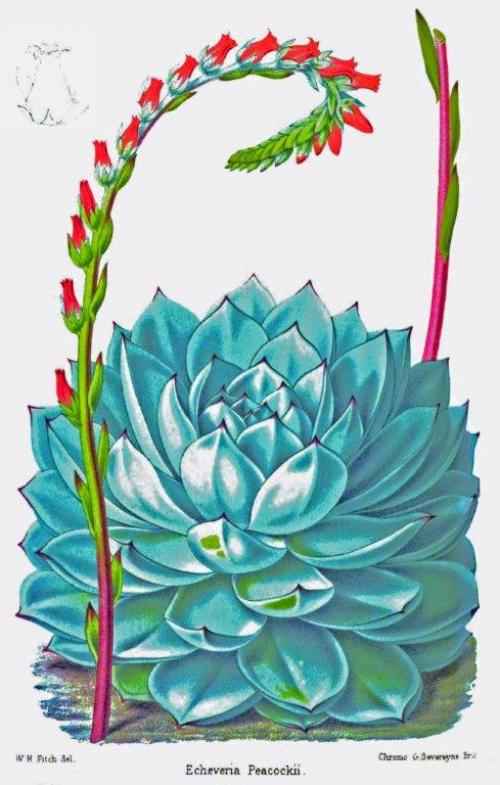
1875 Echeveria Peacockii. With an illustration. The Florist and Pomologist, ser.3 8: 121. Journal of Horticulture Office, London. First description of Echeveria peacockii T.Moore nom. illeg. (Art. 53.1) = Echeveria desmetiana De Smet (1874)
E. desmetiana in habitat in Mexico :
E. desmetiana dans l'habitat mexicain :
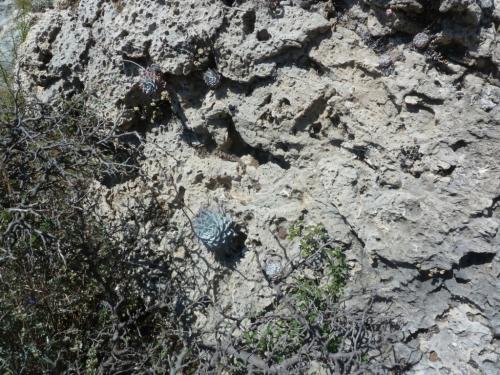
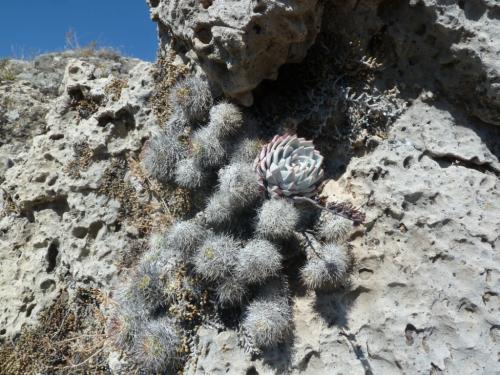
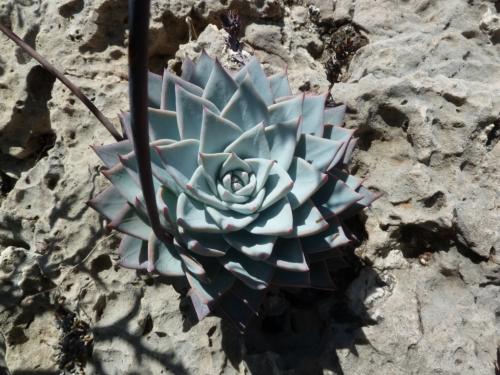
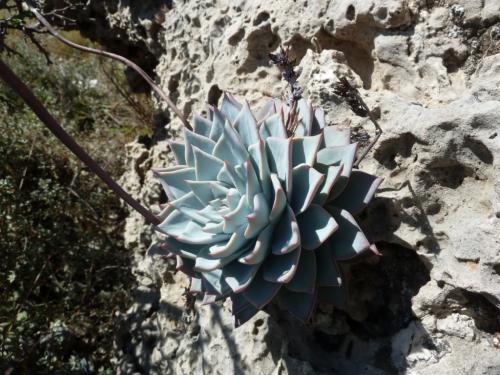
Photos Gerhard Köhres
Plants in cultivation :
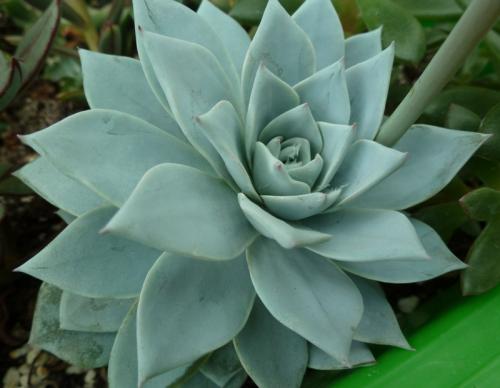
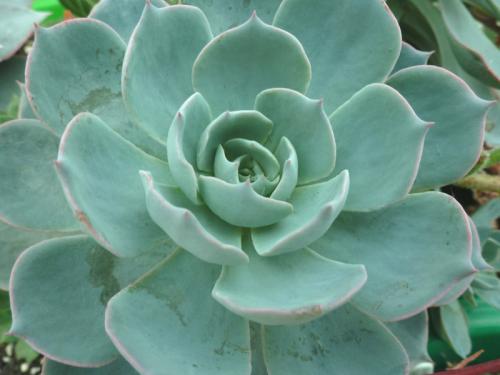
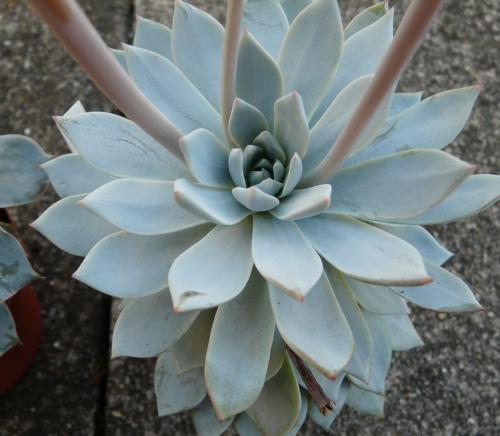
At left the broader leaved form (E. subsessilis), at right a form with narrower leaves > E. desmetiana :
A gauche, la forme à feuilles plus larges (E. subsessilis) ; à droite, la forme à feuilles plus étroites (E. desmetiana) :
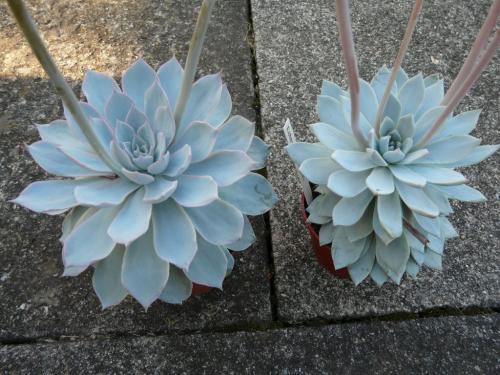
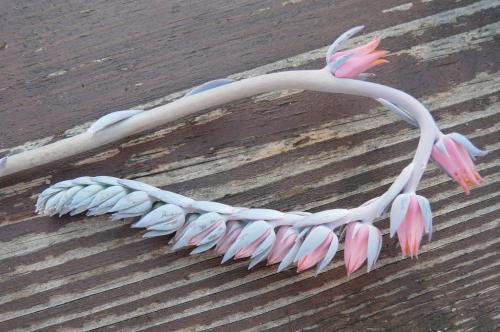
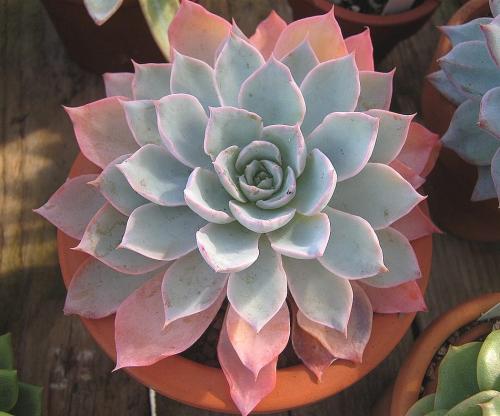
ISI 1200 as E. subsessilis
ISI 1200, sous le nom E. subsessilis.
Photo Emmanuelle Aubé.
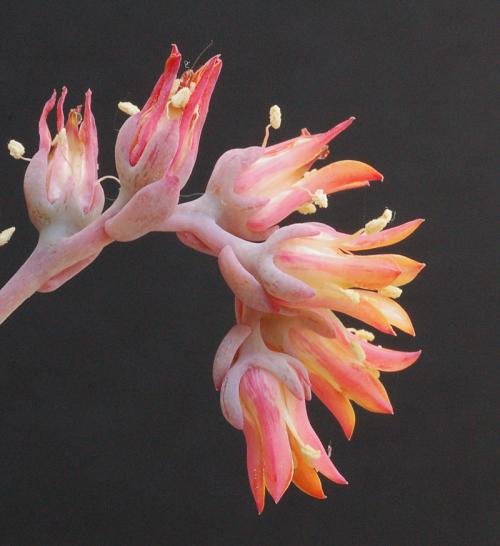
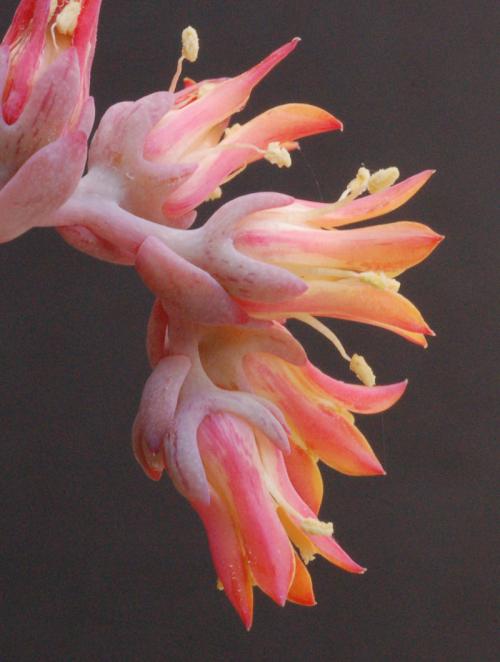
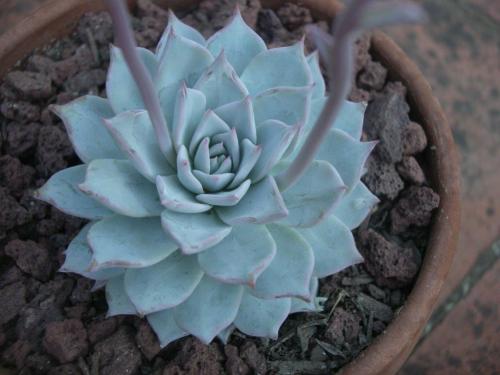
Photo Mateo Lichtenstein
A variegated plant :
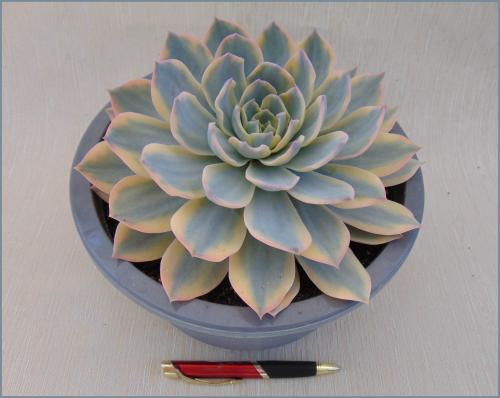
Photo Joan Steele